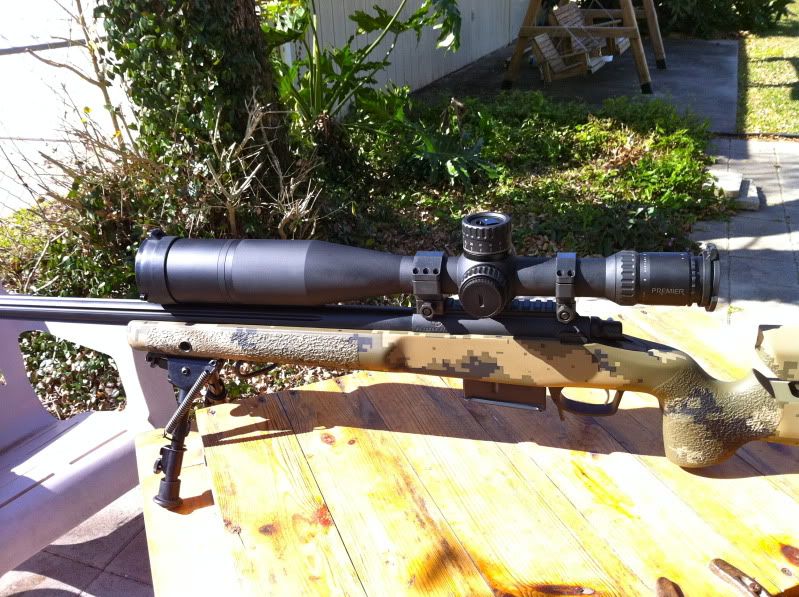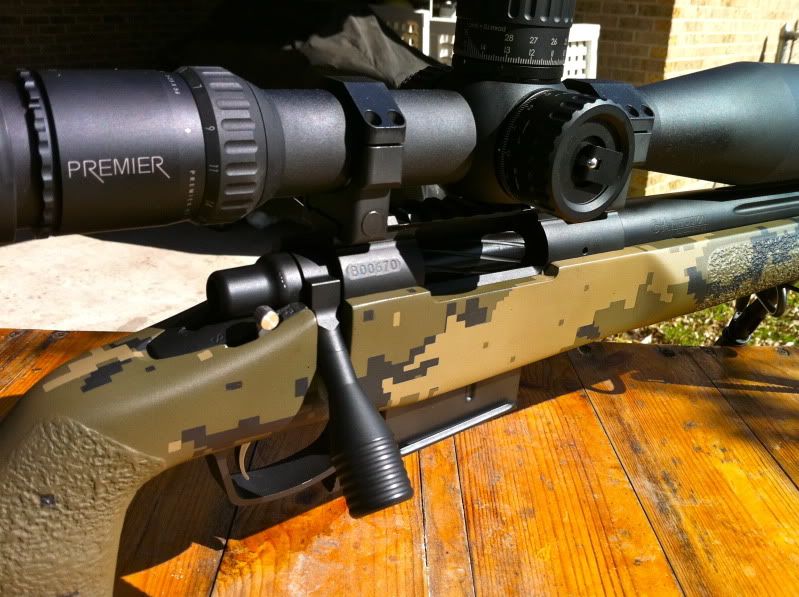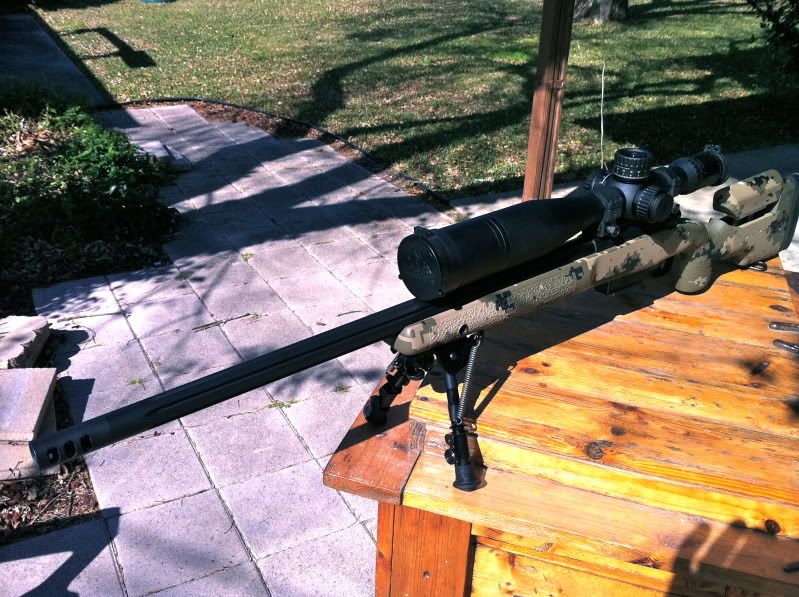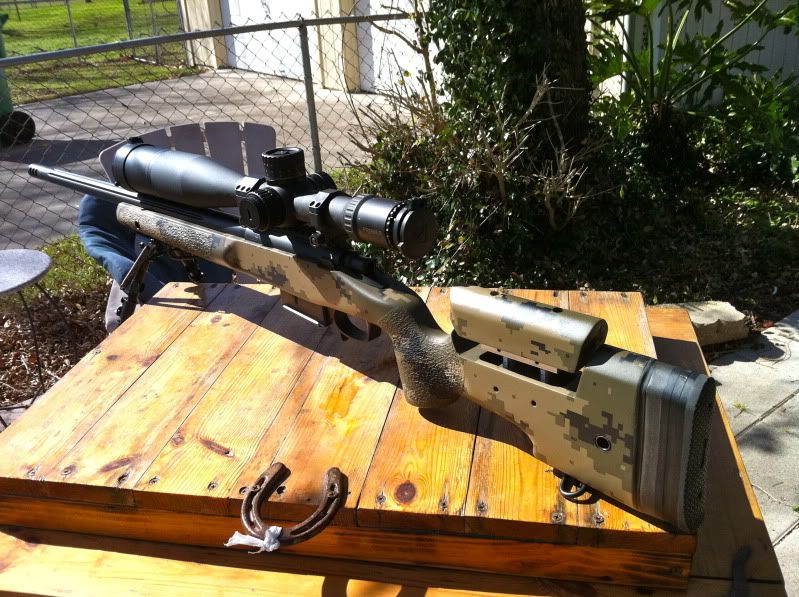Re: Pro's / Con's of barrel flutes
AG-
The "stiffer is better" mentality I have pushed away from is based on the idea that more mass in the barrel will increase the number of shots before temperature change effects show up, as well as the idea that pencil thin barrels for a long time were shown to shoot a few shots well but then they'd walk, this is why the BR shooters are pushing for stiffer and stiffer behavior. This stems from back in the day when barrel manufacturing technology was no where near as good as it is now and having the extra mass meant that successive shots could be taken before heat induced stresses caused problems on the barrel.
It works to a limit. Polar moment of inertia increases at a 4th order rate on a cylinder of given length, mass increases at a 2nd order rate on a given length.
For most behavior the torsional stiffness is not particularly important as the loads running torsionally through the barrel are very low compared to bending harmonic behavior. It still matters, but it's not as big of an effect as the bending harmonics of the barrel.
So, looking at the bending stiffness (K_b) of barrel we want to look at the natural frequency of it. Natural frequency is
sqrt(K_b/mass)
This is important in looking at the "whip" behavior of a barrel. The BR guys will tune loads in between strings as they shoot a match. This is highly impractical for tactical matches or field combat work. Instead, many of the experienced shooters and ammunition companies look for a load that shoots over a broad range of temperature, barometric pressure, etc. so that it has a highly repeatable behavior in all sorts of conditions.
Everything changes with temperature: Bore diameter, speed of sound, powder burn rate, everything in some way changes (even if it's a little bit).
So, therefore, the governing idea for a rifle that's going to be used in all sorts of conditions with a bespoke ammunition build needs to be tolerant of the little changes in behavior.
Making a barrel extremely stiff and light, therefore pushing the natural frequency very high now makes the ammunition tuning extremely important to continue shooting well. Hence the reason that many short and long range BR guys spend thousands of rounds tuning loads under all sorts of conditions and many sit at the bench and load between strings.
If the barrel is kept to a lower natural frequency the "whip" behavior motion now has bigger amplitudes but the time it spends at the "crest" or "trough" of the wave is longer. Much like watching rollers vs. chop on a lake. You want the bullet to exit the bore at the peak or trough of the amplitude behavior each time to increase the repeatability.
If you're tuning the load to sit on top/bottom of a big, smooth "roller" it is probably not too difficult to visualize how that's easier than trying to tune something to sit on the top/bottom of the "chop".
Keep in mind that the barrel doesn't only whip in a vertical plane but in a horizontal plane, a plane that is somewhere between the vertical and horizontal, and others. This is called "coupled behavior" and the modal shapes change in each plane. Decoupling completely is impossible but repeatable behavior can be tuned for consistency in a large range of conditions. Lowering the natural frequency of the system to tune the behavior is beneficial in this case.
Similar concept as to why the old Crossley 35 Formula Ford chassis cars are still extremely fast with bumpy circuits, the soft chassis soak up the ripples and grip can be maintained. Running something very stiff in that scenario will end up with broken suspension pieces, beat up drivers and lap times that are seemingly "off". LimeRock Park, CT in 2006 was a perfect example of this. The Crossley 35, 55, 65 cars were running in the 54's & 55's (Mike Rand) and the high speed, low drag cars were in the very high 53's, and 54's.
It was repaved in 2008 (I think, memory is clouding) and the Crossleys didn't change pace much but the Swifts started cutting laps in the 52's overnight.
On to the cooling effects and comparing radiator fins to a fluted barrel.
The L/t (length/thickness or aspect ratio) value of a barrel flute is very low compared to a radiator fin. Radiator fins work well with a high aspect ratio, something in excess of 10 but modern radiators run L/t's in the 35-50 range for the highly effective cooling.
The equations that govern the behavior can be found in just about any Heat and Mass Transfer text.
Since the barrel flute L/t ratio is closer to 0.5-1 they're extremely inefficient that way.
The heat source in the barrel is at the bore and the exterior of the barrel must see the conducted heat from the bore and then radiate and convect it off to the air around it. Cutting flutes into the barrel allows the mass between the bore and air surface to be removed.
This is highly technical and you're right, when you get deep into the frequency tuning, optimal transit time theory and heat transfer many folks get lost. It's beyond their understanding and it really doesn't matter for about 99.9% of the shooting community, it can be made to work better than they can shoot so I try not to push someone one way or another.
Generally, my feeling is this:
If the fluted barrel look is something that appeals to your eye and you're paying the tab on a rifle build then have at it. I personally see it as an expense which does not increase the performance of my weapon platform so I forgo the cost and send it into the fund for the cost of a new barrel when the first one is shot out.







